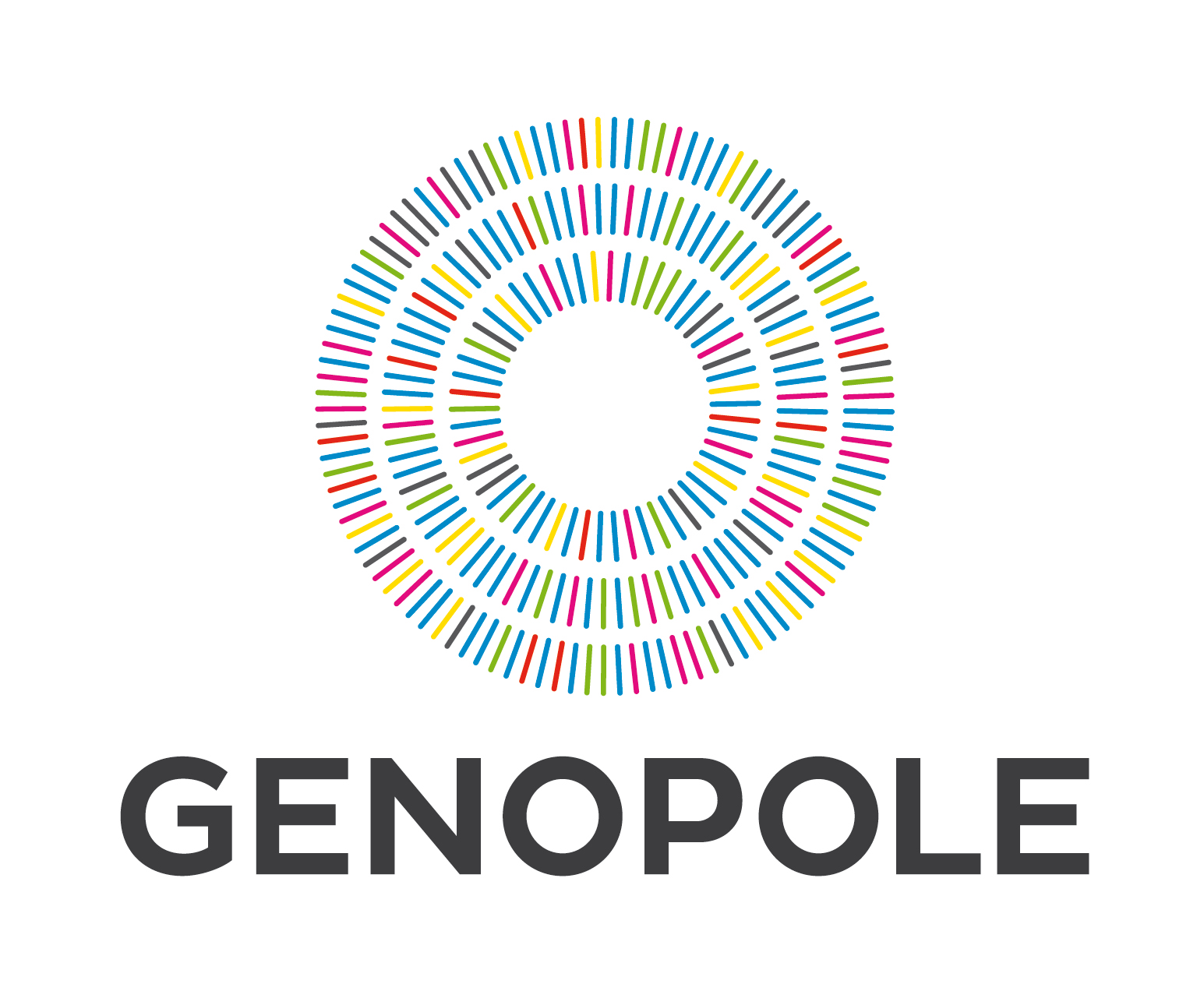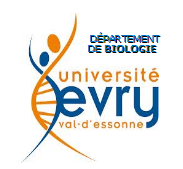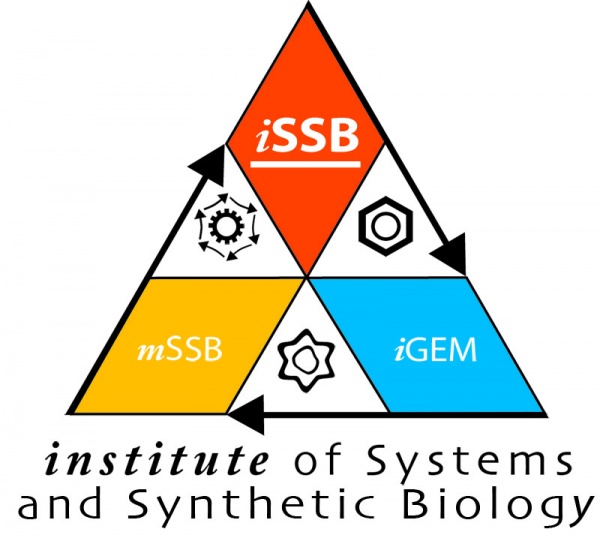Team:Evry/Metabolism model
From 2013.igem.org
| Line 116: | Line 116: | ||
<p> | <p> | ||
| - | + | The ENTEROBACTIN production pathway in kegg starts with the CHORISMATE (or CHORISMIC ACID) compound. Hence, we restricted our study to this specific sub-network, presented in <a href="#Fig2">Figure 2</a> of the whole metabolic network. We did not directly investigated the previous reactions leading to CHORISMATE production. They are taken into accound in the whole metabolic network model but we did not try to act on these. It is also worth noting that the CHORISMATE compound can be bought from any chemical compound supplier (for example <a href="http://www.sigmaaldrich.com/catalog/product/aldrich/c1761?lang=fr®ion=FR">sigma</a>). | |
</p> | </p> | ||
Revision as of 19:42, 28 October 2013
Flux model
Introduction
In this part of our modeling work we focus on genome scale analysis of the enterobactin production pathway. A major concern about our system is its non-orthogonality with the natural metabolic network of the cells : E. coli already possesses the genes for producing enterobactins. Therefore we wanted to assess the possible interactions between our system and the bacterial metabolism.
Observations
This model stems from the following observations :
- Enterobactin production pathway is a metabolic process;
- Any of the involved metabolites may limit the rate of the reactions.
As can be seen in the Figure 1 the pathway is 4 steps long and composed of six different enzymes. Hence there exists 4 possible metabolites which concentration may be limiting :
- Chorismate
- Isochorismate
- 2,3-dihydroxy-2,3-dihydrobenzoate
- 2,3-dihydroxybenzoat
Goals
We highlighted two main kind of interactions between the bacteria and our system :
- The synthetic system interacts with the bacterial metabolism. Leading to a depletion of the metabolites involved in the pathway for the other (possibly essential) metabolic reactions of the cell.
- The other way round, the metabolic reactions could prevent our synthetic system to work as expected by limiting the quantity of the involved metabolites available.
- Is the metabolic model of E. coli able to provide any information about the possible interactions between our system and the metabolism?
- Is the concentration of any metabolite limiting ?
- In the latter case, what is the quantity of precursor that should be added in the medium?
Materials and Methods
Model
We used the metabolic model E. coli iJR904 downloaded from the BiGG model database[1]. We chose this model because it contains all the metabolites involved in the enterobactin production pathway.
This model contains 4037 reactions and 625 metabolites but lacks the enterobactin synthase (the last reaction of the enterobactin production pathway). We thus extended the model by adding three new reactions :
| Name | Formula |
|---|---|
| ENTSYNTH | 6 ATP + 3 2,3-DIHYDROXYBENZOATE + 3 L-SERINE => ENTEROBACTIN + 6 AMP + 6 DIPHOSPHATE |
| ENTOUT | => -1 ENTEROBACTIN |
| CHORIN | => +1 CHORISMATE |
The last two reactions are respectively output flux of ENTOUT and intput flux of CHORIN that are artificial reactions used to measure and interact with our system. The modified E. coli iJR904 model containing these two new reactions can be found in the download section at the bottom of the page.
Network Reduction
The ENTEROBACTIN production pathway in kegg starts with the CHORISMATE (or CHORISMIC ACID) compound. Hence, we restricted our study to this specific sub-network, presented in Figure 2 of the whole metabolic network. We did not directly investigated the previous reactions leading to CHORISMATE production. They are taken into accound in the whole metabolic network model but we did not try to act on these. It is also worth noting that the CHORISMATE compound can be bought from any chemical compound supplier (for example sigma).
We also found that it would also be possible to by the 2-3-DIHYDROXYBENZOATE compound from the same provider. This compound may be very interesting to test our constructions later as the last precursor of the pathway. For the same reason, and because it does participate in any other reaction in the used model, this compound has no interest in our metabolic modeling.

The considered subnetwork of metabolic reactions of E. coli. Red arrows are reaction consuming compounds used in the ENTEROBACTIN production pathway. Arrows : reactions, circles : enzymes.
Flux Balance Analysis
The metabolic model of E. Coli is represented as a stoichiometry matrix S representing the metabolic network. Our modified version has the size 4039 (reactions) * 625 (compounds). The unknown is the flux distribution vector v, a 4039-vector representing the flow of matter (mmol/gDW/h) going through each reactions.
The Flux Balance Analysis method[2] is about finding this flux repartition vector v given an objective function to optimize (usually the growth rate) and a set of constraints of fluxes.
Assumptions of the model
The Two assumptions at the heart of the method are the following :
- steady state: The fluxes are considered to have attained a static equilibrium value and do not change through time.
- No enzyme saturation: The enzymes are supposed to be not saturated, the number of enzymes is always greater than the number of the corresponding reactions happening.
Formalism
The FBA method use a representation of the metabolic reaction network in the form of a stoichiometry matrix S where :
- Each row corresponds to a reaction R_i
- Each column corresponds to a metabolite C_j

The FBA problem is then formulated as a maximisation problem under some constraints :

where :
- v is the vector of unknown reaction fluxes
- c is a vector of constants defining the objective function
- S is the stoichiometry matrix
- lowerbound and upperbound are vector of constraints (minimal and maximal flux values for each reactions)

Tunning these boundaries allows to represent different experimental conditions, for example reducing an upper bound to a low value may represent a loss of reaction flux due to the scarcity of a certain compound.
Such optimization is then realized through a linear programming algorithm finding an approximated solution of the real optimal flux distribution (the distribution maximizing the objective function).
Software used
To perform the simulations we decided to use the cobrapy software[3] in conjunction with the GLPK (GNU Linear Progamming Kit) linear programming solver.
All the simulations of model modifications were made through python scripts, available at the end of the document.
Results
The results are presented on the two following pages:Conclusion
The metabolic models presented in this sections have been used to answer the general questions we had about our system.
First, we wanted to know if adding new synthetic constructs would perturb the metabolism of E. coli. This was answered by a first model plotting a modified objective function optimizing both ENTEROBACTIN production and growth rate. The model showed that the enterobactin pathway perturbs the CHORISMATE MUTASE and DEOXYCHORISMATE SYNTHASE reactions.
In two other models, we showed that the CHORISMATE MUTASE AND DEOXYCHORISMATE SYNTHASE were very crucial for the bacteria, as a reduction of their maximal upper flux lead to a direct (linear) decrease of the growth rate function. Resulting in the extreme case with a nul growth rate for a nul flux.
Finally, we analysed how we could find a workaround to this problem by adding some CHORISMATE to the medium. This situation was represented in a third model with a CHORISMATE input flux that we plotted against the modified objective function. This model clearly showed that the ENTEROBACTIN flux attained a maximal stable region for any value of the objective function starting from 17 mmol/gDW/h of CHORISMATE. Finally, the dynamic of the model is very smoother as more CHORISMATE is added, showing that this addition could paliate the effects of the addition of the ENTEROBACTIN pathway.
In the end, this FBA model shows that it is possible to paliate the effect of our construction on the metabolism of E. coli by adding some CHORISMATE to the medium. This justifies the other models developed that did the assumption that no metabolite was limiting.
Models and Scripts
Metabolic Models
The two metabolic models used are :
- Wild-Type E. coli iJR904
- ENTOUT(enterobactin outflux) + ENTSYNTH(enterobactin synthase) E. coli iJR904
Scripts
The scripts used to generates the curves on this page can be found on this archive. They are Python scripts with distinct names corresponding to the simulation they represent.
References:
- Schellenberger, J., Park, J. O., Conrad, T. C., and Palsson, B. Ø., "BiGG: a Biochemical Genetic and Genomic knowledgebase of large scale metabolic reconstructions", BMC Bioinformatics, 11:213, (2010).
- Orth, Jeffrey D., Ines Thiele, and Bernhard Ø. Palsson. "What is flux balance analysis?." Nature biotechnology 28.3 (2010): 245-248.
- Ebrahim A, Lerman JA, Palsson BO, Hyduke DR. 2013 COBRApy: COnstraints-Based Reconstruction and Analysis for Python. BMC Syst Bio 7:74.
 "
"














